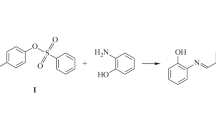Conclusions
-
1.
A19F NMR spectroscopic study of 4-fluorophenylacetylene and its derivatives showed that the electron-withdrawing capacity of the C≡CX groups increases in the following series for X: cyclo-C6H11Hg < MeHg < PhHg ≈ Ph3C ≈ Ph3Pb < Ph3Sn < H < Ph3Ge.
-
2.
The formation of a hydrogen bond or coordination bond of coordinating solvents with these compounds makes a significant contribution to the change in the electronic effect of the C≡CX groups and this contribution increases in the following series for X: Ph3Sn < Ph3-Pb < H ≈ cyclo-C6H11Hg < MeHg < PhHg.
-
3.
4-Fluorophenylacetylene and its organometallic derivatives are convenient model compounds for the study of metal-proton and metal-metal exchange reactions.
Similar content being viewed by others
Literature cited
L. A. Fedorov, A. S. Peregudov, and D. N. Kravtsov, Usp. Khim.,48, 1572 (1979).
A. S. Peregudov, V. F. Ivanov, D. N. Kravtsov, and L. A. Fedorov, Izv. Akad. Nauk SSSR, Ser. Khim., 1674 (1981).
D. N. Kravtsov, A. S. Peregudov, and V. F. Ivanov, Izv. Akad. Nauk SSSR, Ser. Khim., 522 (1983).
A. D. Allen and C. D. Cook, Can. J. Chem.,41, 1084 (1963).
H. G. Viene, The Chemistry of Acetylenes, Marcel Dekker, New York (1969).
M. C. Esquivel, A. S. Macias, and L. B. Reventos, Inorg. and Nucl. Chem.,39, 1153 (1977).
J. W. Emsley and L. Phillips, Mol. Phys.,11, 437 (1966).
R. D. Green, Hydrogen Bonding by C-H Groups, MacMillan Press, London (1974).
R. W. Taft, E. Price, I. R. Fox, I. C. Lewis, K. K. Andersen, and G. T. Davis, J. Am. Chem. Soc.,85, 3146 (1963).
O. A. Osipov, V. I. Minkin, and A. D. Garnovskii, Dipole Moment Handbook [in Russian], Izd. Vysshaya Shkola, Moscow (1971).
K. C. Ingold, Reaction Mechanisms and the Structure of Organic Compounds [Russian translation], Inostr. Lit., Moscow (1959), p. 112.
T. R. Griffiths and D. C. Pugh, Coord. Chem. Rev.,29, 129 (1979).
L. J. Andrews and R. M. Keefer, Molecular Complexes in Organic Chemistry, Holden-Day (1964).
Author information
Authors and Affiliations
Additional information
Translated from Izvestiya Akademii Nauk SSSR, Seriya Khimicheskaya, No. 4, pp. 849–855, April, 1984.
The authors express their gratitude to L. S. Golovchenko for providing a sample of 4,4′-difluorodiphenyltolan.
Rights and permissions
About this article
Cite this article
Peregudov, A.S., Ivanov, V.F., Kravtsov, D.N. et al. Synthesis and19F-{1H} NMR spectra of 4-fluorophenylacetylene and its organometallic derivatives. Russ Chem Bull 33, 783–787 (1984). https://doi.org/10.1007/BF00947833
Issue Date:
DOI: https://doi.org/10.1007/BF00947833




